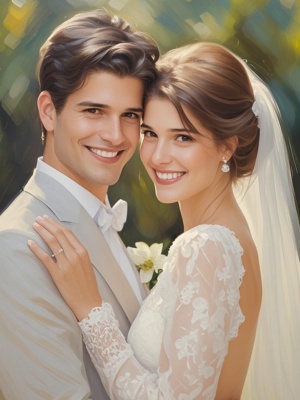Exploring the Diverse Styles of Oil Painting
Oil painting is one of the most versatile and enduring art forms, with a rich history spanning centuries. Artists have developed numerous styles of oil painting, each with unique techniques, aesthetics, and cultural significance. Whether you're an aspiring artist or an art enthusiast, understanding these styles can deepen your appreciation for this medium. In this article, we'll explore the major styles of oil painting, their characteristics, and how they continue to influence modern art.
1. Renaissance: The Birth of Realism
The Renaissance period (14th-17th centuries) marked a turning point in oil painting techniques. Artists like Leonardo da Vinci and Raphael perfected the use of perspective, chiaroscuro (light and shadow), and anatomical accuracy. Key features include:
- Highly detailed, realistic representations of human figures
- Use of linear perspective to create depth
- Religious and mythological themes
- Glazing techniques to achieve luminous colors
For those interested in learning more about classical techniques, our AI Painting Guide offers insights into how traditional methods intersect with modern technology.

2. Baroque: Drama and Movement
Emerging in the 17th century, Baroque oil painting emphasized emotional intensity and dynamic compositions. Caravaggio and Rembrandt were masters of this style, characterized by:
- Strong contrasts between light and dark (tenebrism)
- Dramatic, theatrical scenes
- Rich, deep colors and visible brushwork
- Emphasis on movement and energy
This style remains influential today, particularly in portrait painting and dramatic compositions. The National Gallery in London houses excellent examples of Baroque masterpieces.
3. Impressionism: Capturing the Moment

The 19th-century Impressionist movement revolutionized oil painting with its focus on light and spontaneous brushwork. Monet, Renoir, and Degas pioneered this style featuring:

- Visible, loose brushstrokes
- Plein air (outdoor) painting
- Focus on changing light conditions
- Everyday scenes and landscapes
Modern artists continue to draw inspiration from Impressionism, especially in landscape painting. Our landscape scenes collection shows how these techniques translate to digital formats.
4. Expressionism: Emotional Intensity
Early 20th-century Expressionists like Van Gogh and Munch used oil painting to convey raw emotion rather than realistic representation. Characteristics include:
- Bold, unnatural colors
- Distorted forms and perspectives
- Visible, energetic brushstrokes
- Psychological and emotional themes
This style has significantly influenced modern portrait painting, where artists aim to capture the subject's inner life rather than just physical appearance.
5. Contemporary Styles: Pushing Boundaries
Today's oil painters combine traditional techniques with innovative approaches. Some notable contemporary styles include:
- Hyperrealism: Photographic precision in oil painting
- Abstract Expressionism: Non-representational forms and colors
- Mixed Media: Combining oil with other materials
- Digital-Inspired: Incorporating digital aesthetics into traditional painting
The Museum of Modern Art in New York showcases excellent examples of how oil painting continues to evolve in the contemporary art world.
Conclusion: The Enduring Appeal of Oil Painting
From the meticulous realism of the Renaissance to the bold experimentation of contemporary artists, oil painting remains a vibrant and evolving art form. Each style offers unique possibilities for expression and technical mastery. Whether you prefer classical techniques or modern innovations, understanding these diverse styles can enhance both your appreciation and practice of oil painting.
For artists looking to explore these styles digitally, our AI Image to Image tool provides exciting ways to experiment with different painting techniques. The journey through oil painting styles reveals not just the history of art, but also the endless creative potential of this remarkable medium.